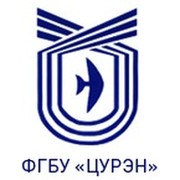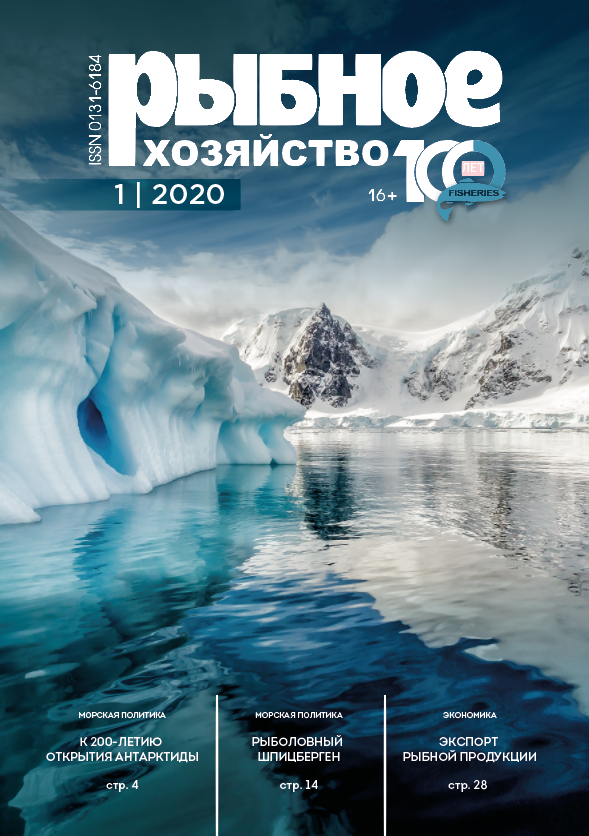VAK Russia 06.04.2001
VAK Russia 08.00.00
The work evaluated the survival and growth of white leg shrimp Penaeus vannamei juveniles in recirculating water systems when feeding with different types of mixed fodders. It is shown that in the early stages of development from 25 to 150 days a fodder with negative buoyancy should be used. A protein content in a fodder between 45 to 57 %% does not affect the growth of the white leg shrimp aged from 85 to 150 days. The study found that in order to enhance the color intensity of commercial products, it is necessary to use fodders with high astaxanthin content. When using high-grade fodder for over the 150 days of cultivation, it is possible to obtain individuals with an average weight of 25 g.
white leg shrimp, Penaeus vannamei, mixed fodder, aquaculture, recirculating water system
1. Fishery and Aquaculture Statistics. Global aquaculture production 1950-2016 (FishstatJ). In: FAO Fisheries and Aquaculture Department. Rome. Updated 2019. www.fao.org/fishery/statistics/software/fishstatj/en
2. FAO (Food and Agriculture Organization). Introductions and movement of Penaeus vannamei and Penaeus stylirostris in Asia and the Pacific 2004. Briggs M., Funge-Smith S., Subasinghe R., Phillips M. (Eds.). Bangkok: FAO, 2004. 32 p.
3. Van Wyk P. Nutrition and feeding of Litopenaeus vannamei in intensive culture systems. In: Van Wyk P, Davis-Hodgkins M, Laramore R, Main KL, Mountain J, Scarpa J (Eds.) Farming marine shrimp in recirculating freshwater systems. Chap. 7. Florida: Florida Department of Agriculture and Consumer Services - Harbor Branch Oceanic Institute, 1999. P. 125-140.
4. Kuresh N., Davis D.A. Metabolic requirement for protein by pacific white shrimp Litopenaeus vannamei. Avances en Nutrición Acuícola V. Memorias del V Simposium Internacional de Nutrición Acuícola. 2000. Cruz -Suárez L.E., Ricque-Marie D., Tapia-Salazar M., Olvera-Novoa M.A., Civera-Cerecedo R. (Eds.). Mérida, 2000. P. 161-180.
5. Lee C., Lee K-J. Dietary protein requirement of Pacific white shrimp Litopenaeus vannamei in three different growth stages // Fisheries and Aquatic Sciences. 2018. V.21. P.1-6.
6. George E.G.J., Jeyaraj G.P., Arumugham V.R. Effect of Extramin on growth enhancement of white leg shrimp Litopenaeus vannamei (Boone, 1931) in low saline semi-intensive pond culture system // International Journal of Fisheries and Aquatic Studies. 2017. V. 5. № 2. P. 479-486.
7. Gunalan B., Soundarapandian P., Anand T., Kotiya Anil S., Simon N.T. Disease occurrence in Litopenaeus vannamei shrimp culture systems in different geographical regions of India // International Journal of Aquacultur. 2014. V. 4. № 4. P. 24-28.
8. Hargreaves J.A. Biofloc production systems for aquaculture. SRAC. 2013. № 4503. 12 p.
9. Perechen' rybohozyaystvennyh normativov: predel'no dopustimyh koncentraciy (PDK) i orientirovochno bezopasnyh urovney vozdeystviya (OBUV) vrednyh veschestv dlya vody vodnyh ob'ektov, imeyuschih rabohozyaystvennoe znachenie. M: VNIRO. 1999. 304 s.
10. Borisov R.R., Pechenkin D.S., Kovacheva N.P. Formirovanie okraski i tovarnyy vid gigantskoy presnovodnoy krevetki Macrobrachium rosenbergii // Rybnoe hozyaystvo. 2016. №3. S. 60-66.
11. Hung L.T., Quy O.M. On farm feeding and feed management in whiteleg shrimp (Litopenaeus vannamei) farming in Viet Nam // FAO Fisheries and Aquaculture Technical Paper. Ser. On-farm feeding and feed management in aquaculture. 2013. № 583. P. 337-357.
12. Latscha T. The role of astaxanthin in shrimp pigmentation // Advances in Tropical Aquaculture. 1989. V. 9. P. 319-325.
13. Tlusty M.F., Metzler A., Huckabone S., Suanda S., Guerrier S. Morphological colour change in the american lobster (Homarus americanus) in response to background colour and UV light // New Zealand Journal of Marine and Freshwater Research. 2009. V. 43. P. 247-255.











